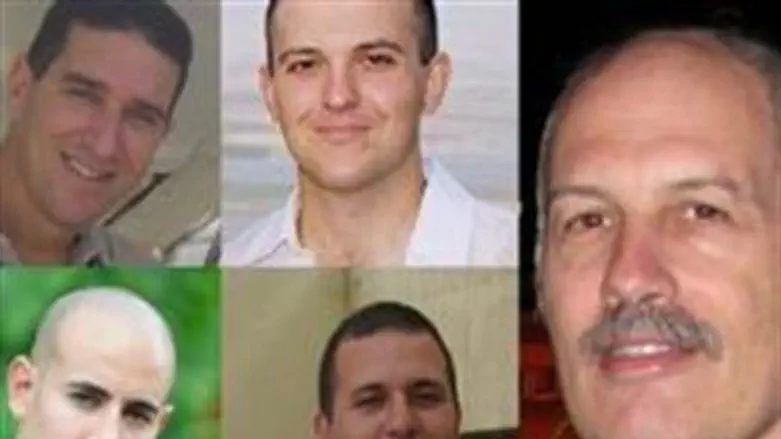
Earlier today, the Romanian television station "Antena 3" reported that some of the bodies of the crewman killed in the tragic helicopter crash have been recovered. The IDF spokesperson confirmed the report, saying that the remains of the six IDF Air Force crewman who were killed in the crash on Monday were recovered today by Israeli and Romanian rescue services.
Romanian security services took some of the remains to a hospital in the city of Brasov. An Israeli forensic team is on its way to the hospital to identify and return the remains home to Israel.
A large IDF rescue team comprising 80 members arrived on the site in three Israeli Air Force helicopters, the IDF spokesperson said. The team included 669, the IDF's elite rescue unit, Rabbnical Corps, Medical Corps and the Oketz canine unit.
The Tragic News
The IDF Spokesman announced Tuesday that seven bodies have been found in the location of the helicopter crash in Romania. An official Romanian prosecutor signed “confirmed death” certificates for the bodies.
The dead are six Israel Air Force crewmen and one Romanian observer who took part in the exercise.
The information has been relayed to the families of the airmen. IDF body identification crews and representatives of the Military Rabbinate were on their way to the scene of the crash.
Rabbi Naftali Deutsch, the Chabad emissary in Romania, told Arutz Sheva Tuesday that the IDF soldiers taking part in the IDF's military exercise in Romania "did not sleep all night, searching for their comrades who were aboard the crashed helicopter."
He said that the area of the crash is marked by very tall mountains, and can be reached only by foot. He said he had gotten to know all the soldiers in the exercise over the past few weeks.
Video: IDF delegation leaves to helicopter crash site
The six IDF soldiers aboard the crashed helicopter in Romania were:
* Maj. Yahel Keshet (33) of Hatzerim, near Be’er Sheva, married and father of two. He was born, and his parents still live, in Moshav Sharona in the Lower Galilee, where family and friends gathered to give each other comfort and hope. “A ‘Land of Israel’ family that raised their children with values and Zionism,” a friend said with sadness.
* Lt. Nir Lakrif (25) of Tel Nof Air Force Base. His wife of a year, Maggie, who was the first to be informed that her husband was on the fallen craft, is four months pregnant. She then informed his father Yuval, who lives in Kiryat Ata with his second wife, and his mother Daniela. Nir recently completed his studies in the Air Force’s Technical School with honors.
* Lt.-Col. Avner Goldman (48) of Modi'in, the only reserves soldier on the flight.
* Lt.-Col. Daniel Shifenbauer (43) of Moshav Kidron, near Yad Binyamin, a department head in the IAF’s Operations Staff.
* Maj. Lior Shai (28) of Tel Nof Air Force Base
* Sgt.-Maj. Oren Cohen (24) of Rehovot
“We have apparently lost some of the IAF’s best air fighters,” say IAF sources.
Israel and Romania have agreed upon a joint investigation of the crash. Initial speculation is that the Yas’ur helicopter crashed into a mountainside as a result of poor visibility in the inclement weather, or a technical failure.
This was the worst IAF accident in 13 years. In February 1997, two Yas’urs crashed into each other on their way to Lebanon in heavy fog above northern Israel, claiming the lives of all 73 aboard both. Eight of the fallen soldiers were air force crewmen, while the others were combat troops on their way to outposts in southern Lebanon.
Though the Yas’ur has been involved in several fatal accidents ever since Israel began using it in the late 1960’s, it is considered an indispensable element of the Israel Air Force and the backbone of its air transport network. Manufactured in the United States, where it is known as the Sikorsky CH-53 transport helicopter, it has taken successful part in many complex military operations over the years.
Just over three years ago, the Air Force began its “Yas’ur 2025” program to upgrade the Yas’ur with new systems in self-defense, electronic warfare, communications, safety, and more. The goal is to be able to continue to use the Yas’ur until the year 2025.